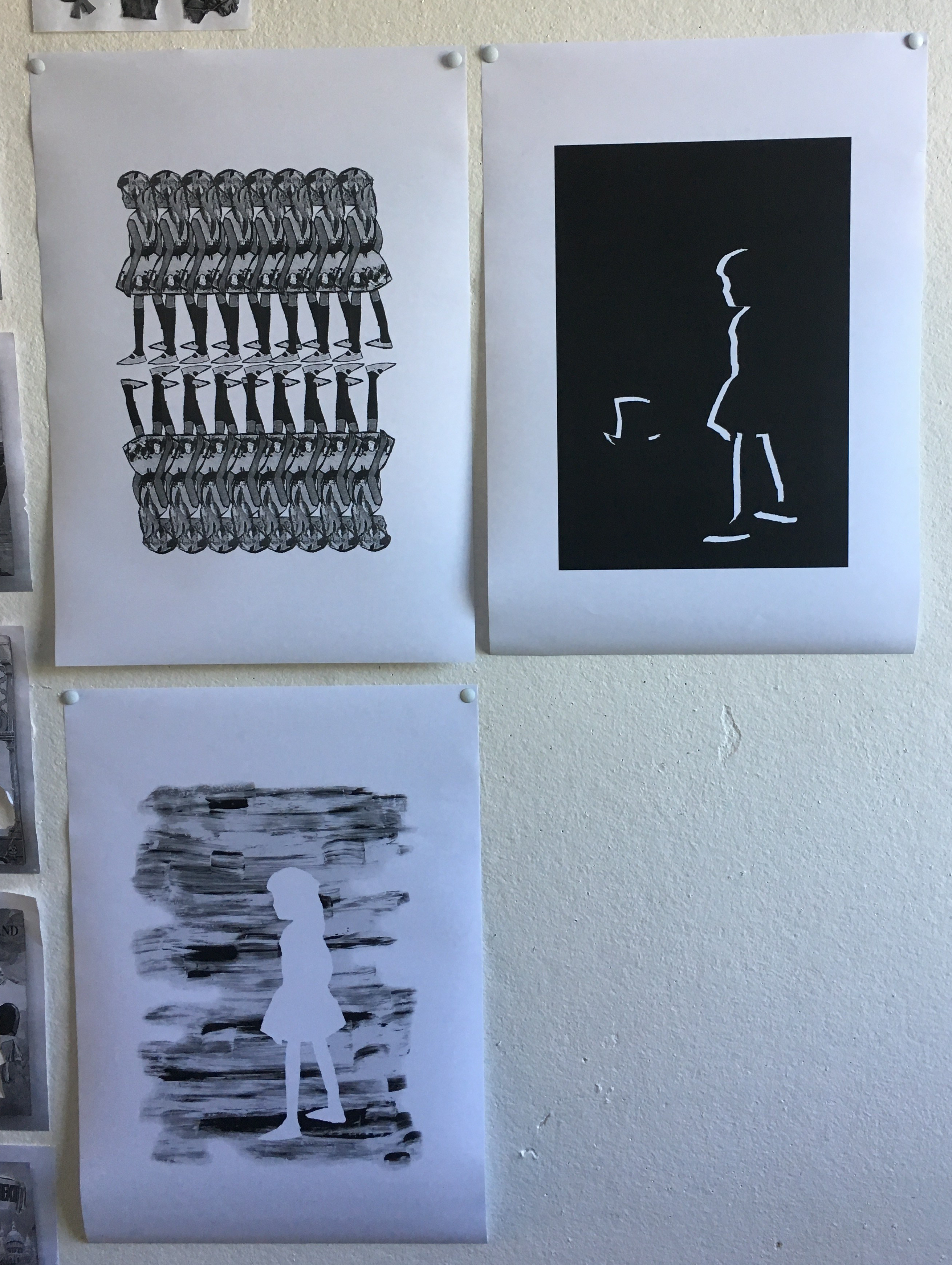We were asked to choose 2 of our favourite drawings from our reworked sequence and present them. Here are the 2 I chose from my exploration of removing key parts of the covers and replacing them with hand-drawn patterns:
Category: Process
Re-Gridding | C&D Assessment
Here we were asked to ‘re-grid’ and shuffle our initial sequence to create a different set of sequences. I came up with 2 ideas to reshuffle my sequence into different sequences (one relying on composition and the other on idea).
Here is a sequence of titles with similar composition (heavy header with text, some negative space in the centre and figures towards the bottom of the cover.
And a collection of titles from the same series (suggesting the idea of tradition and attachment to fictional characters and stories in childhood)
Collection Sequence | C&D Assessment
This was my first collection sequence. I thought hard about what collections I had and this one stood out to me most: the collection of old books passed on to me from my mother. The coherence of the sequence runs through the idea that they are the same category of item and the meaning behind each of them is the same.
The second sequence I chose (the one I got from the internet) was a sequence of album covers that have meant a lot to me over my life.

Grid Composition | C&D Assessment
At this stage, we were asked to take inspiration from the Pinterest board ‘Grid’ and to explore different compositional strategies to create a new sequence of images.
Here I played around with the idea of collage and random, yet deliberate composition, combining all of my works into one sequence. After feedback from Richard and the class, however, I began to rethink my sequence and decide which ones I required and which ones I didn’t. This will become evident in my final works post.
At this point, though, I was working with all of my works, figuring out how to include different compositional strategies.
Here they are:
Here I continued the rectangular composition that I implemented in the first sequence, This time utilising some more ‘outside the box’ techniques such as breaking the borders with parts of shapes etc. (in the vein of collage). Although these are technically ‘digital collages’, the digital element was only utilised to aid in the iterative part of this task. Most of the features were either hand-drawn or scanned onto the computer. I think that continuing this grid composition but making it a bit more random enabled me to create more appealing and deep works. I also continued to work in the foreground, although there is overlap in the collaged works.
Additive and Subtractive Drawing Strategies | C&D Assessment
At this point we were asked to do the following:
Using either principle (or both) of “all-over” or “figure/ground” compositions (or try both), produce a new sequence of four images:
• Two utilising an additive drawing strategy
• Two utilising a subtractive drawing strategy
I was only able to come up with 3 at this point before we moved on to the next part as I became quite confused about my theme and had a bit of trouble coming up with ideas in this stage. Here they are, 2 being subtractive and 1 being additive:

I think that my approach to the more graphic style of this sequence made more sense than what I had been doing before. By utilising my own prior experience rather than relying on the limited knowledge I have of creating hand-drawn artwork on a large scale iteratively, I began to more quickly create and iterate the ideas that I had begun with. I think that in the first piece (the painted background with a white silhouette) my merits lie in the combination of hand-drawn and computer generated. The composition that continues throughout the sequence is also something I quite like. It has a kind of linear and balanced rectangle running throughout, bordering the works. In the second one (the 3d figure on black) I think that the composition may be slightly too simple and I think it stands out a bit too much when it comes to creating a cohesive sequence, but the continuation of the rectangle and the introduction of another piece of the story (the Mad Hatter’s hat) make it shine. In the third piece (the patterned figure) I think that it has a very graphic sensibility which I love. Again, the balance of the composition pleases my eye when I look at it next to the others and the continuation of the motif of Alice keeps it in check with the others in the sequence.





















